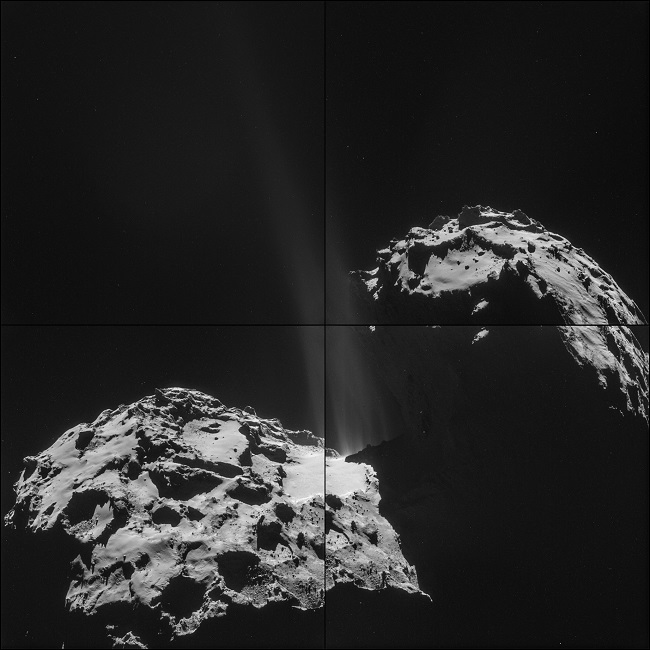One of the four images taken for the Rosetta comet montage. Image: ESA
New stunning images from 23km above the Rosetta comet have shown that the ancient space debris is emitting a tail of ice and dust 19,000km long and will continue to grow.
The montage of four images were compiled by the European Space Agency (ESA) who admit that trying to create an individual image of the comet from combining four images has become increasingly difficult due to how close the probe is, as well as the speed at which the comet is rotating.
However, from the images, it would appear that the comet officially known as 67P/Churyumov-Gerasimenko is in a state of great upheaval at the moment as the close-up shots show a great volume of ice is sublimating which is being released as a huge quantity of gas.

The difficulty in lining up the four images exactly has proven difficult as seen with the bottom half not exactly lining up with the bottom. Image: ESA
This current level of activity can be attributed to it getting ever closer in orbit to the sun and from the images that are coming back, the source of this gas is originating from several different locations deep within the ancient space debris.
At its current size, the comet’s coma, or the tail that comes from it, extends as far as 19,000km from the comet’s nucleus.
Explaining how they created the amazing montage, the ESA’s space science editor, Dr Emily Baldwin said it took a lot of image manipulation: “In order to make the images more or less equivalent, the vignetting in the corners of the images has been reduced, and some processing of the overall brightness and contrast has been applied using Adobe Lightroom. Finally, the montage has been rotated by 180°.”